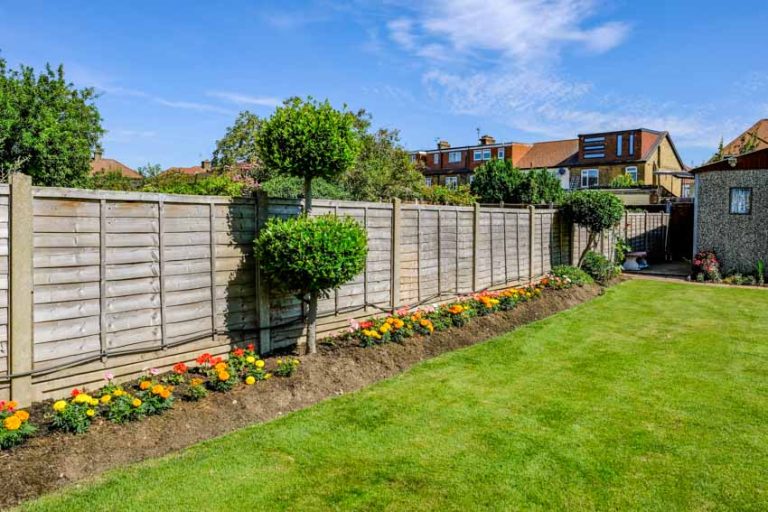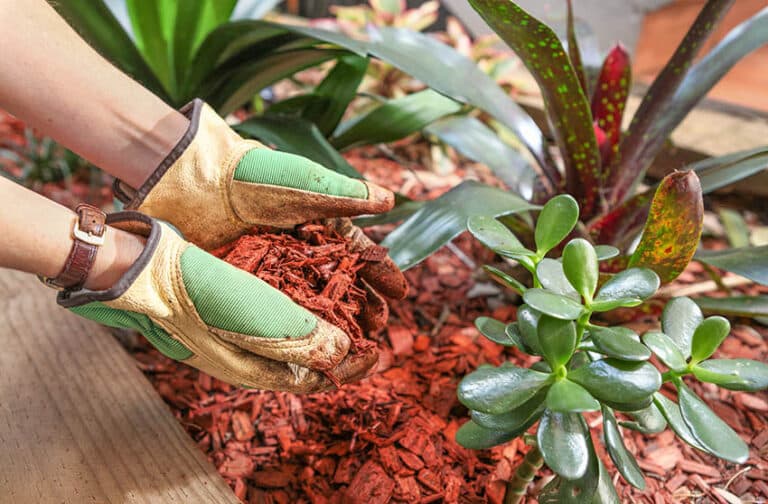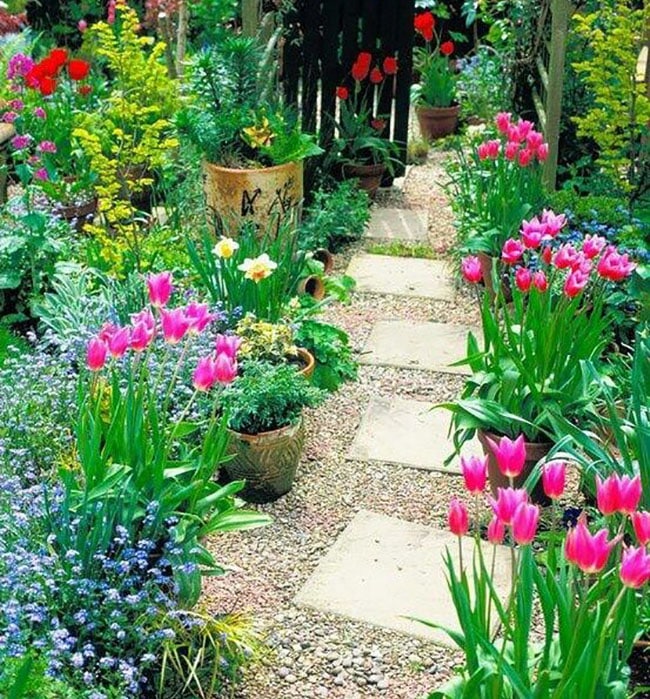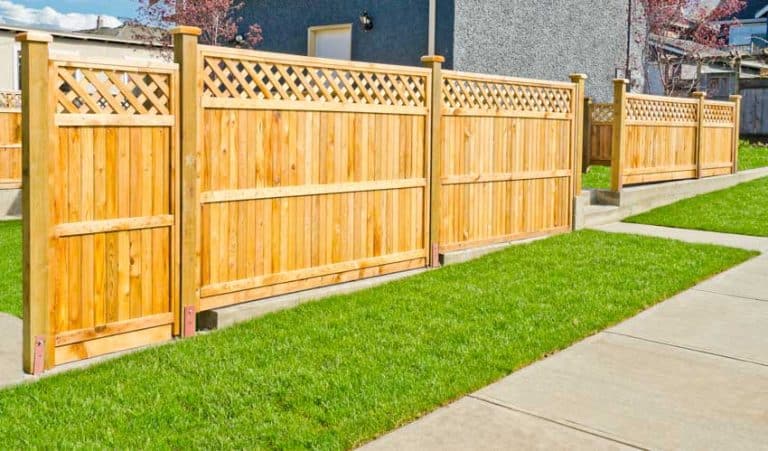Types of Dracaena Plants (Varieties & Care Tips)
Here’s the different types of dracaena plants including caring & pruning tips, how often to water them, how fast they grow, and if dracaena plants can be planted outside.
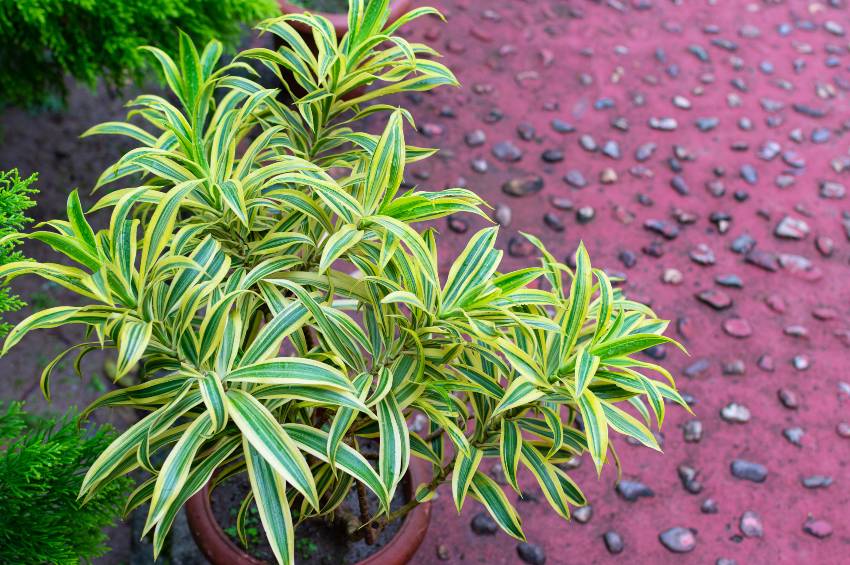 Dracaena plants have been a huge part of horticulture for what seems like a millennium. It’s a huge genus with over 170 species and counting, as breeders create new hybrids that dazzle in strange new colors and patterns. While the number of dracaena species is a little intimidating, a much smaller number of those can thrive indoors.
Dracaena plants have been a huge part of horticulture for what seems like a millennium. It’s a huge genus with over 170 species and counting, as breeders create new hybrids that dazzle in strange new colors and patterns. While the number of dracaena species is a little intimidating, a much smaller number of those can thrive indoors.
This plant comes in all shapes and sizes, from small houseplant sizes to towering trees. These can vary so much in appearance that it might be hard to tell those two species sitting next to each other are related, and that’s part of what makes dracaena so much fun. Here are a few different varieties that you can grow yourself![toc]
Dracaena Marginata
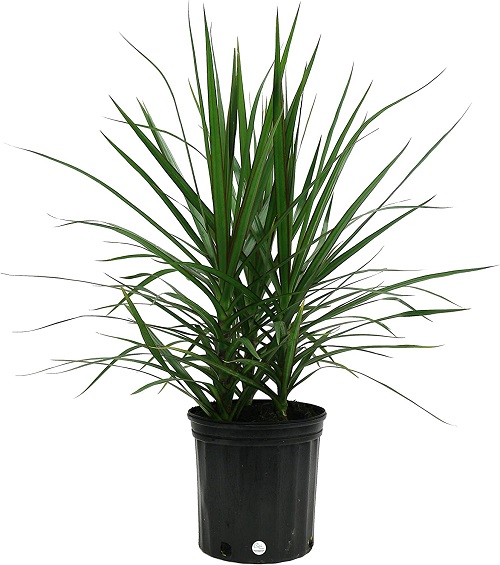
This variety is perhaps the most purchased species in places like big box stores and garden centers. Commonly called “Dragon Tree”, this species is usually sold as a small potted plant or a mid-height floor plant. Though they’re sold in small containers, they can grow to be over seven feet tall with proper repotting and care over the years.
Marginata is such a diverse subspecies that there are multiple hybrids always available on the market. At the top of the list is “Tricolor”, a surprisingly bright species featuring electric pink striping on the long, slender leaves. This one is a great species for anyone looking for a bit of a dracaena challenge!
Dracaena Fragrans
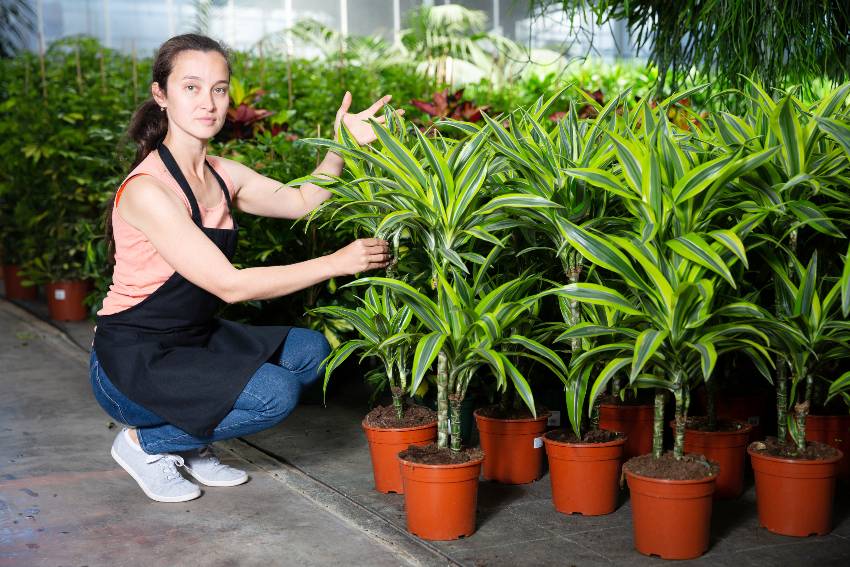
The style of this plant makes it a fun plant to add to a room that needs a little touch of color and a jurassic-style shape. They can also be trained to grow in certain ways, giving you the opportunity to customize the way the stems grow.
They’re also often sold pre-braided. Commonly sold as a heavily hybridized species, Dracena fragrans is also known for its variety. “Lemon lime”, a recently popular variety that boasts both a bright gold hue as well as a dark lime green. These contrasts are what make this species so appealing to use in offices, meeting rooms, and sitting rooms.
Dracaena Draco
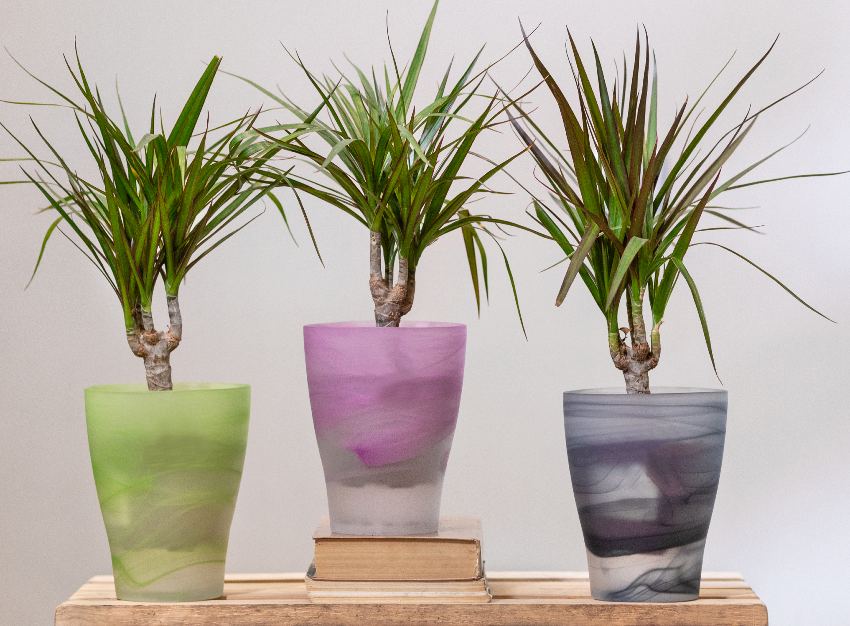
The traditional dragon’s blood incense is made from this plant. It’s easy to grow indoors, as it doesn’t require much water; however, this species tends to like more sunlight than the others. Check more indoor plants that like direct sunlight here.
Draco also produces small white flowers, which are rare in indoor growing conditions but nonetheless possible. They aren’t heavily scented but do end up turning into small berries that can either be removed by pruning or simply allowed to drop naturally.
Dracaena Reflexa

Interestingly, this one is a very slow grower, and only reaches about four feet in height under perfect conditions. While there aren’t many variations of this species, it is still wildly popular as a common houseplant around the world.
Dracaena Sanderiana

The healthiest lucky bamboo will be a medium-bright shade of green with plenty of leaves growing from the top year-round. Check out more in our guide to the types of bamboo house plants.
Unlike most other dracaena species, sanderiana prefers to grow in water in captivity. It’s most often found in shallow dishes with pebbles or decorative glass as a substrate for the roots to hold onto, and fertilized with a specialized fertilizer that can be found online.
Dracaena Trifasciata
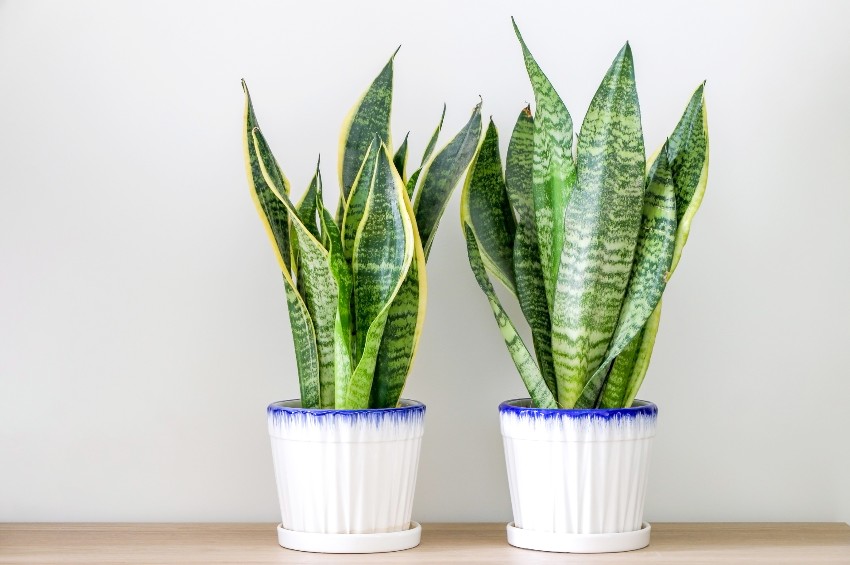
These plants are tolerant of lower light conditions, but in contrast to the common misconception that trifasciata doesn’t need light, they do prefer bright, indirect light. The lighter this plant gets, the faster it grows; if yours hasn’t grown for quite some time, it may be time to move it to a new location.
What Is a Dracaena Plant?
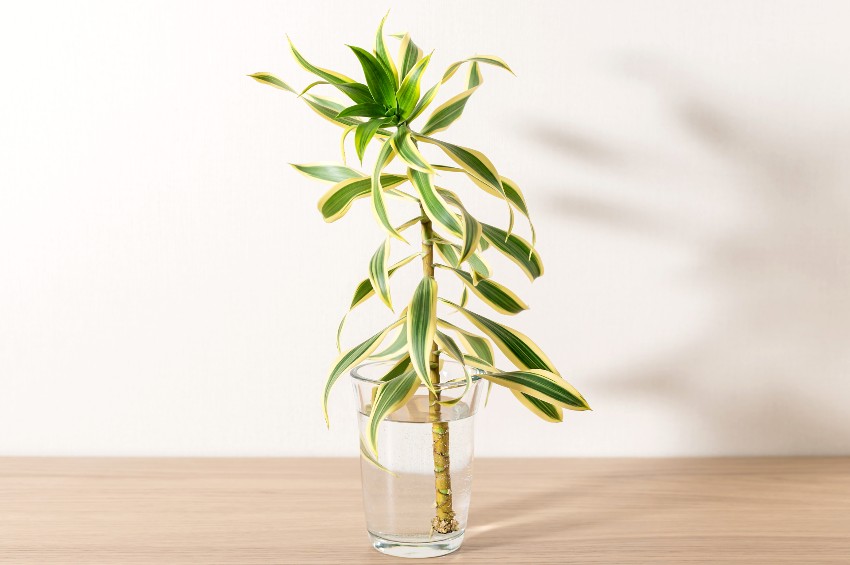
These plants most commonly bear long, slender, pointed leaves with some variations in color and size. They can also have wildly varying growing preferences; some prefer to live in dry heat, while others like to live in humid or very wet climates. Be sure to research which type of environment your particular dracaena plant likes for best growth.
While there are tons of different kinds of species out there that are natural, there are also many that are man-made hybrids. Consider the ones that are sold in terrariums, floral arrangements, and other size-limited containers; these species are bred to remain small, so that they can continue to grow in small spaces.
How to Care for a Dracaena Plant
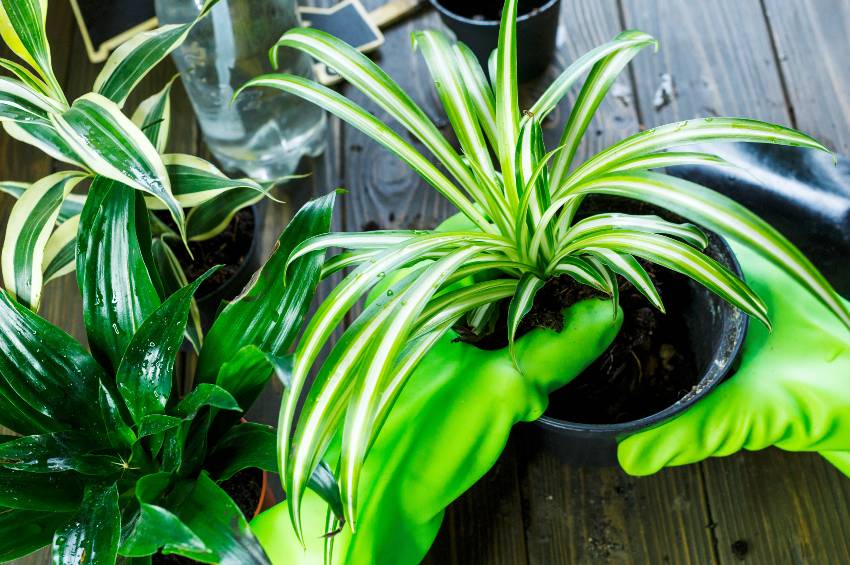
Water should be kept to a minimum for any dracaena that doesn’t come in water itself (so, everything besides lucky bamboo). The same goes for fertilizer; once every six months is plenty, and it should be done using a diluted, well-balanced fertilizer formulated for indoor plants or succulents.
Dracaena plants hate being root bound; for that reason, it’s important to find the right balance in pot size and soil composition. Use a soil that has plenty of larger chunks to promote drainage, and a pot size that allows the dracaena to grow roots without having too much extra room, where excess moisture tends to sit.
To repot, choose a container that has lots of drainage holes in the bottom, as well as a tray to catch any water that runs out. It should be about an inch wider than the current pot is, which helps maintain that room to moisture balance mentioned above. Dracaena like their roots on the drier side, so terra cotta is perfect for these guys.
As far as light is concerned, it prefers more light than less. Their tropical homelands receive lots of sunlight daily, so dracaena like to experience roughly the same levels.
Try to aim for at least eight hours of bright, indirect light per day at the minimum. Avoid direct light, which can scorch dracaena leaves and cause unsightly brown spots.
How Often to Water Dracaena
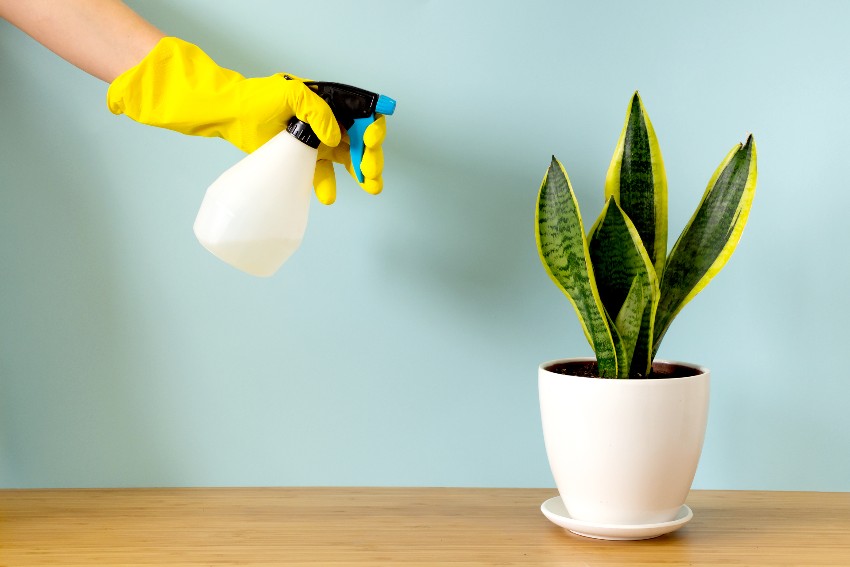
Instead of using a set time schedule for watering like other plants, dracaena should be watered only using moisture measurements. It doesn’t require a fancy moisture meter, though these can be very useful for pots with deep soil. A simple dip of a finger into the soil a couple inches is enough to tell how moist the soil beneath the surface is.
The top ⅓ of the soil inside a dracaena’s pot should be dry before watering again, to avoid oversaturating the soil. It are very prone to root rot, which is a risk that is most prevalent in overly soggy soil. Soil that contains lots of perlite can help with moisture management in dracaena pots.
Watering will likely look different depending on the climate you live in and the seasons. It will also vary with growing seasons, as dracaena need more water before they begin to sprout out for the season. Once the growing season is over, they likely won’t use as much water, and it’s noticeable; the soil won’t dry out as quickly, and the plant won’t be as light-colored as it was when it was putting out new growth!
Dracaena Pruning Techniques

To prune for height, simply cut off the dracaena about four inches below where you’d want its ideal height. Dip in rooting hormone powder, then either root in fresh, clean water (with frequent changes) over the course of about two months, or root in soil with lots of perlite and moisture the same way.
However, if some of the foliage is beginning to look unsightly, such as browning tips or sun spots, pruning is a great way to remove select spots of foliage after the root problem is taken care of. Just getting rid of a few discolored portions can make a dracena look fresh and new again!
To cut away brown or burnt tips, simply snip at a sharp, 45-degree angle just below where the worst of the damage is located. This edge will likely develop a very unnoticeable crispness, but don’t worry about cutting any further once this happens. It isn’t likely to become notable unless the plant is still experiencing the issue that caused the discoloration in the first place.
Can a Dracaena Be Planted Outside?
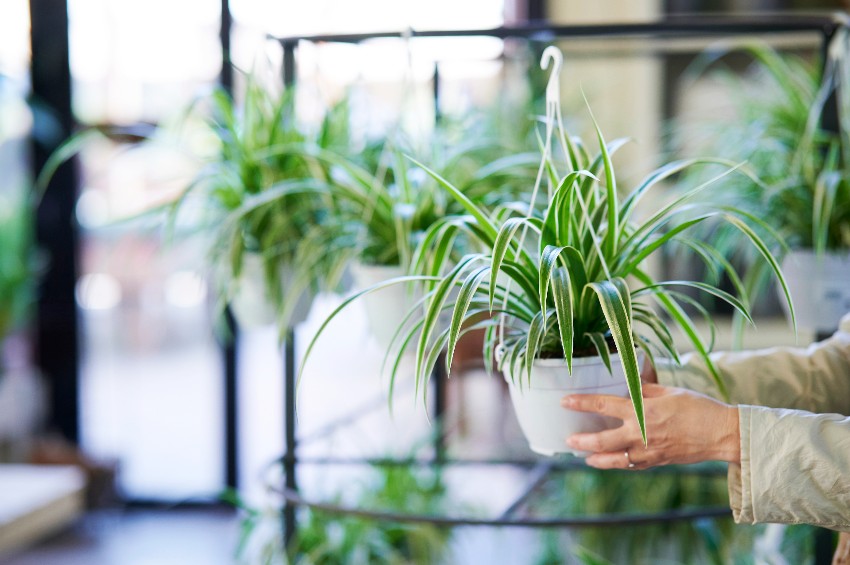
While dracaena can’t tolerate anything under 65 degrees, they also don’t do well in anything over 95 degrees, either. This cuts out the possibility of year-round growing in zone 12, but during cooler months where temperatures stay reasonable,this plant can be placed outside to soak up some much-needed sun.
In zones 8-9, it can be placed outside during the daytime, so long as the temperature doesn’t drop below 65 degrees during the day. However, since nighttime temps often drop well below 65 degrees even in the summer in these zones, it’s best to bring them indoors at night to avoid the risk of frost-bitten leaves and irreversible damage.
How Fast Do They Grow?
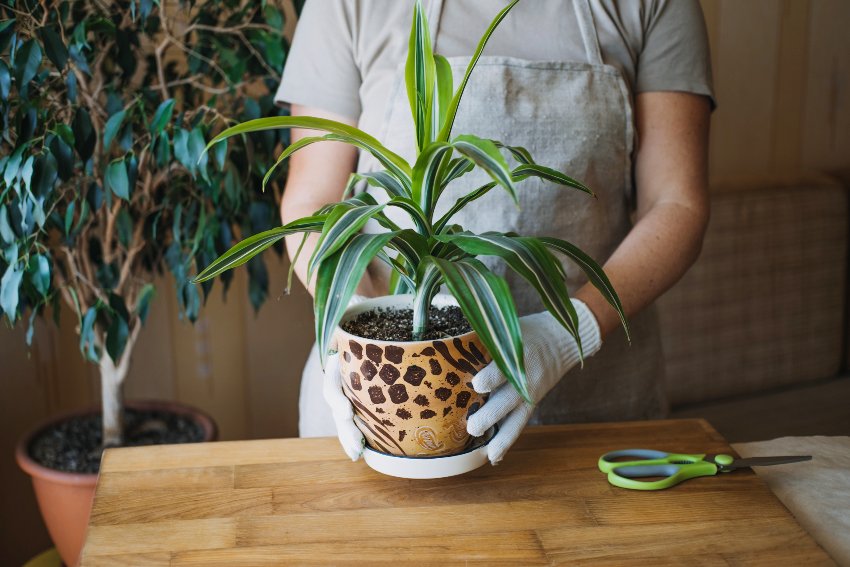
Indoors, this plant can put on some serious height in just a few short years. Species like marginata can even grow up to a foot each year, given enough light and fertilizer. Others, like fragrans, grow at a slower rate, but still branch out quite a bit during the growing seasons.
It’s to be expected that lower light conditions will cause slower growth. If you want your plant to grow faster, offer bright, diffused light for at least six hours per day. Low light conditions will still produce growth, but it will be slow, and there’s a risk that the plant will become “leggy” or too grown out to stand on its own.
Are These Plants Toxic to Dogs & Cats?
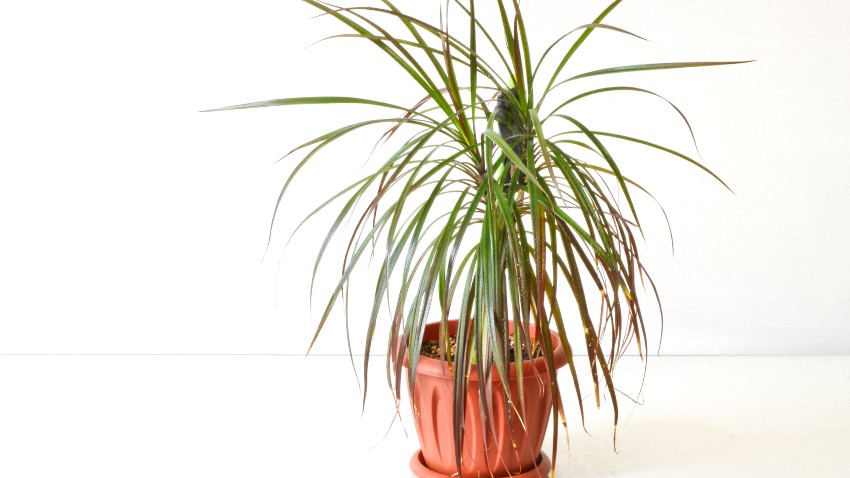
In order to keep your pets from taking a noxious nibble of your plant, try to keep it up and out of the way, or place it up on a surface that pets can’t access. See our guide to plants that are safe for cats here.
There are also several ways to deter your pets from taking a bite of this plant. One good option is to use a spray that smells bad to them, such as those containing neem, lemon, or other citrus oils. These scents are great for combating not only pets, but also pests such as mealybugs and spider mites. Be sure to spray any chemicals outside, where they can’t be inhaled by your pets.
Common Dracaena Health Issues

One of the most common causes of brown or yellowing leaf tips is over or under watering. These plants are great at telling you what they need, so their leaves become discolored if they’re not happy.
Check the soil to make sure that it’s not broken down and waterlogged. Similarly, if it is visibly separated from the edges of the pot, then underwatering is the culprit.
To correct this issue, try repotting with fresh, well-draining soil. Use a moisture meter to determine how often to water; the top half of the soil should be dry to the touch before rewatering, so as not to smother the roots. Allow any excess water to drain freely away into a tray or onto the ground, if you water outside.
Another common issue stems from pests. Mealybugs, scale, and spider mites are the most common culprits. All of these parasitic insects tend to gravitate towards the tender undersides of leaves, right where they meet the stem. If you see webbing, small white specks, or discoloration in these areas, you can bet that it is suffering from an infestation.
The first step to take in this case is to separate this plant from any others in the area. If nearby plants have been touching or otherwise directly exposed to the infected plant, quarantine them as well. Use an environmentally friendly horticultural treatment to prevent the spread of pests and to kill out the current populations.
You can also try using an all-around tried and true remedy for almost all pests: neem oil. A mixture of neem oil, castille soap, and water works great to not only knock out the presence of pests, but also to shine up dull, old leaves and stems. Be sure to fully saturate the infected plants with whichever treatment you choose and check on them routinely to be sure that these tricky little insects don’t make a comeback!
For more related content visit our guide on the top red indoor plants on this page.



